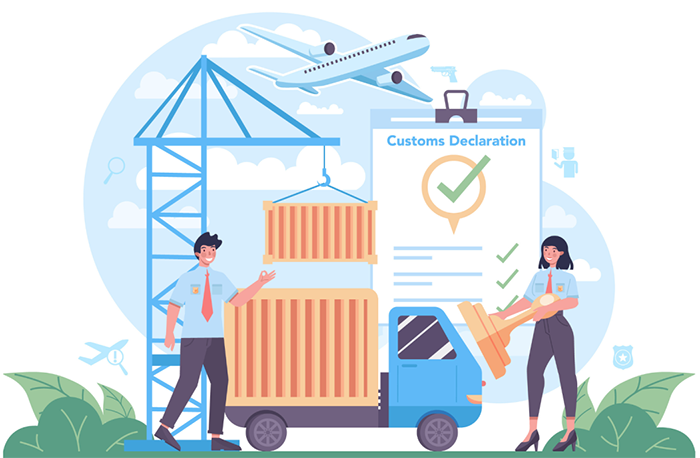SVB clearance under related party transactions is a crucial aspect of custom clearance services, aimed at ensuring transparency, accuracy, and compliance with customs regulations. This process involves assessing the transaction value of goods imported or exported between related parties to prevent under-valuation and maintain fair trade practices.
Understanding SVB and Related Party Transactions
Definition of SVB
SVB, or Special Valuation Branch, is a specialized unit within customs authorities responsible for investigating and determining the transaction value of goods imported or exported between related parties, such as parent companies, subsidiaries, or affiliates.
Explanation of Related Party Transactions Related party transactions refer to commercial transactions between entities that have a close relationship or affiliation, such as companies under common control or ownership. These transactions may involve the transfer of goods, services, or assets at prices influenced by the relationship between the parties.
Importance of SVB Clearance
Regulatory Compliance
SVB clearance ensures compliance with customs regulations and international trade agreements by accurately assessing the transaction value of related party transactions. This helps prevent under-valuation, duty evasion, and unfair trade practices that may distort market competition.
Importance of SVB Clearance
Regulatory Compliance
SVB clearance ensures compliance with customs regulations and international trade agreements by accurately assessing the transaction value of related party transactions. This helps prevent under-valuation, duty evasion, and unfair trade practices that may distort market competition.
Preventing Under-valuation
SVB clearance plays a crucial role in preventing under-valuation of imported goods by related parties, which can lead to revenue loss for customs authorities and unfair advantages for importers. By assessing the transaction value objectively, SVB helps maintain the integrity of customs valuation systems.
Process of SVB Clearance
Initiation of SVB
Investigation
The SVB investigation is initiated when customs authorities have reason to believe that the transaction value of imported or exported goods between related parties may not reflect the true value. This may occur based on risk analysis, intelligence, or information provided by concerned parties.
Submission of Relevant Documents
Importers or exporters involved in related party transactions are required to submit relevant documents to customs authorities, including invoices, contracts, pricing agreements, and financial statements. These documents help assess the transaction value and determine any adjustments required.
Assessment and Determination of Value
Customs authorities assess the transaction value based on the principles outlined in the World Trade Organization's Agreement on Customs Valuation. This involves comparing the declared value with the transaction value of identical or similar goods, considering adjustments for related party relationships, and determining the customs value accordingly.
Verification of Transaction Value
Customs authorities verify the transaction value by comparing it with the customs value of identical or similar goods imported or exported under similar circumstances. This helps ensure consistency, transparency, and fairness in customs valuation practices.
Challenges and Solutions in SVB Clearance
Documentation Requirements
One of the challenges in SVB clearance is the complexity and volume of documentation required to support related party transactions. Implementing electronic documentation systems and streamlining document submission processes can help address this challenge.
Complex Transactions
Related party transactions may involve complex pricing arrangements, transfer pricing policies, and inter-company transactions that require careful scrutiny by customs authorities. Collaborating with customs consultants and legal experts can assist businesses in navigating these complexities and ensuring compliance with SVB regulations.
Compliance Risks
Non-compliance with SVB regulations can result in penalties, fines, and delays in customs clearance processes. Businesses must establish robust internal controls, conduct regular audits, and maintain accurate records to mitigate compliance risks associated with related party transactions.
SVB clearance refers to the process of investigating and determining the transaction value of goods imported or exported between related parties to prevent under-valuation and maintain fair trade practices.
SVB clearance is important for ensuring compliance with customs regulations, preventing under-valuation, and maintaining the integrity of customs valuation systems in related party transactions.
Documents required for SVB clearance include invoices, contracts, pricing agreements, financial statements, and any other relevant documents that substantiate the transaction value of related party transactions.
Customs authorities assess the transaction value by comparing it with the customs value of identical or similar goods imported or exported under similar circumstances, considering adjustments for related party relationships.
Challenges in SVB clearance include documentation requirements, complex transactions, and compliance risks associated with related party transactions, which can be addressed through collaboration with customs consultants and implementation of internal controls.
- Bonded Warehousing & Distribution
- Clearance under EOU/SEZ/EPCG/Advance License
- Clearance Under Wireless Planning Committee (WPC Licence)
- Duty Drawbacks
- Export Clearance under various Schemes
- FTWZ (Free Trade Warehousing Zone) Services
- Import Customs Clearance
- Pre & Post Import Consultation
- SVB (Clearance Under Related Party Transaction)

